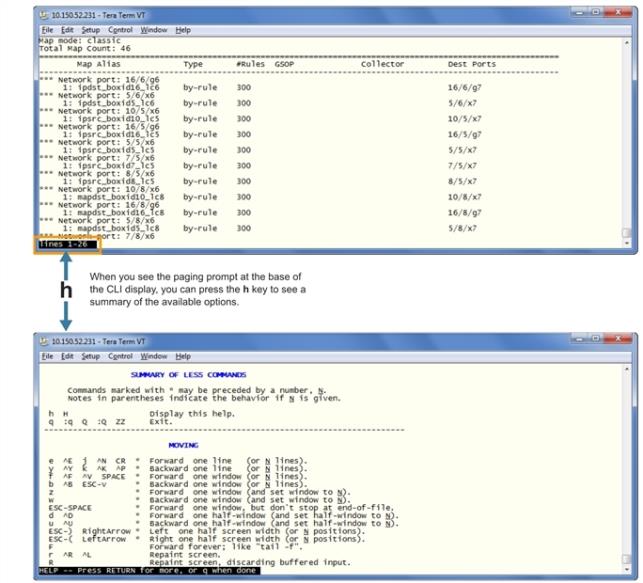Command-Line Syntax – Entering Commands
You enter all configuration commands for the GigaVUE‑OS in the command-line interface. Enter commands by typing enough characters to uniquely identify the command and pressing <Enter>.
When entering commands, keep in mind the following rules:
| Successful commands return no response in the CLI; commands with errors return an error response beginning with %, followed by a short error description. |
| All commands are case-sensitive. |
| Aliases are case-sensitive and accept both lower and upper case – for example, my_alias and My_Alias refer to two separate maps. |
| The no command is used to remove configuration settings. For example no connect alias myconnect deletes the named myconnect. |
| Port numbers are entered in <chassis-id>/<slot-num>/<port-num> format. For example, 1/1/x1 identifies the 10Gb/1Gb port x1 in slot 1 on box 1. |
| Strings must consist entirely of alphanumeric characters with no spaces. The only exceptions are the underscore (_) and hyphen (-) characters. Those are allowed. |
For example, in Configure mode, port 1/1/g1 alias My_Alias is legal, but port 1/1/g1 alias My Alias is not.
Note: Some string fields do accept spaces provided the input is made inside quotation marks (for example, the banner login command described in Using a Custom Banner).
Configure Mode Syntax
Users of GigaVUE nodes may be accustomed to entering the word config before many commands – config map, config port-filter, and so on. When using the GigaVUE‑OS, the “config” part of the command is implied whenever you are working in Configure mode. The system prompt helps you remember this by including the word (config) in parentheses. For example:
(config) #
So, instead of entering config gigastream to set up a GigaStream consisting of multiple ports, you just enter gigastream followed by the necessary arguments. The config part is implied because you are already working in the Configure mode. For example:
(config) # gigastream alias mystream port-list 1/1/x1..x4
Paging through CLI Output
By default, the CLI returns output exceeding the configured terminal length in pages. The CLI provides the same features for working through the paged output as the Linux programs less and more. Press the h key when presented with the paging prompt at the base of the display to see paging options – 1 Viewing Paging Options provides an example of how to do this.
If you prefer, you can disable paging either for the current session or by default:
| Disable for Current Session(config) # no cli session paging enable |
| Disable for All Sessions (Default)(config) # no cli default paging enable |

| 1 | Viewing Paging Options |



